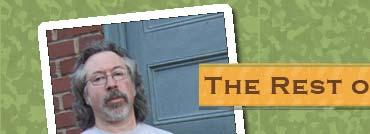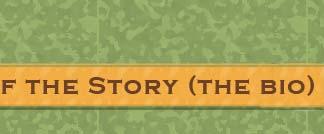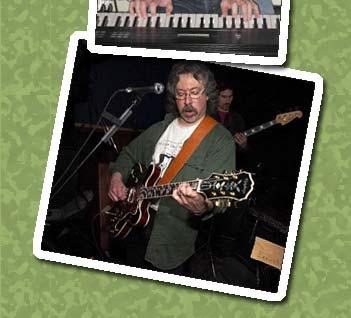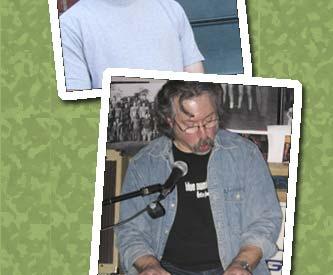



Music was in Roger’s blood from the very beginning. His father, David, was not only a good singer, he was a very capable piano player, fiddler, and played the oboe well—it was that particular skill with a difficult instrument that led to him performing in an Army Air Force band during World War II—and kept him from seeing actual combat. And then there were his four musical sisters. All Silverberg children from his dad’s generation had to learn to sing and play an instrument. No wonder that live music happened all the time in the ancestral living room situated in a small town near the Pennsylvania, Ohio, West Virginia border. Whether by nature or nurture, the hook was in.
In spring of 1963 Roger got his first guitar, a Kay archtop bought for $18 from a Philadelphia pawn shop. Armed with a printed chord chart and a pitch pipe for a tuner, and no small measure of desire and persistence, Roger’s music career officially was launched. Less than 6 months later Roger gave his first public performances, singing and playing songs like “Blowin’ In The Wind” and “King of the Road”. Then British Invasion happened and changed everything. Hearing the Beatles (and seeing them on TV) and catching his first real concert—it was Herman’s Hermits at Steel Pier in Atlantic City—prompted Roger to join up with some of the other music geeks he knew to form his first band. While that particular group, like most bands he played with, did not stay together long, the dream of a music career had been firmly implanted.
As a student at Penn State University, Roger performed as a solo acoustic act at coffeehouses and also with a core of musicians known around State College, PA as The Jam Factory. At radio stations WHR, WDFM, and WQWK (this last being a real commercial station where Roger held a part time job) Roger built a reputation as a musically knowledgeable air personality and also developed engineering and production skills. Alas, a real career in radio was not to be as the only radio jobs being offered were in very small markets such as the one offered at a station in Bethlehem, PA.
Realizing that it would be hard to make ends meet in Bethlehem doing grave yard air shifts as well as production chores AND taking a second job on top of that to pay the rent, Roger returned to Philadelphia in early 1974. For the remainder of the decade he worked in the advertising business by day and played music at night, covering tunes heard on the radio along with a sprinkling of Silverberg-written originals. Most of these gigs were of the simple guitar/vocal type but still they were paying gigs. Looking to aim higher, he attempted to put and keep bands together throughout the 1970s. But the failure of one project he was particularly keen on—a female fronted pop rock outfit in the mode of the Pretenders—completely soured Roger on the band thing. It was to be his last band until 2001. But it was also during this period, the late 70s, that the songwriting spigot really opened wide. Instead of a handful of presentable originals, he now had several dozen.
A relocation to New York City in 1982 spurred a renewed interest in public performance. The scene on MacDougal Street and Bleeker Street was alive and Roger, who now had a solid set of originals, played regularly. He became involved with the Fast Folk Musical Magazine and for several years lent his graphic arts talents to doing their record album jacket and insert design. He also did a lot of “stuffing and mailing” and rubbed elbows with quite a few people whose names any music lover would certainly recognize. Not surprisingly, in such a fertile environment Roger wrote a lot more material. Some of these are songs he still performs today.
A move in 1987 to Huntington, Long Island, while conducive to starting a family, marked a musical hiatus of sorts. Bleeker and MacDougal were suddenly a long way away and, besides, by the late 80s the scene in The Village had changed. Roger didn’t return to public performance until 1998 when he ventured out to debut two new tunes on piano at an open mic hosted by the Folk Music Society of Huntington. Encouraged by some kind words from Little Toby Walker, who also played that open mic, Roger rededicated himself to doing music.
At the same time as he was developing a fresh repertoire of original material and refining his performing skills by playing open mics and scoring some solo gigs, he co-founded the band Jericho Turnpike in 2001. Jericho Turnpike, featuring two strong songwriters in Roger and Ken Fine, and 3-part vocal harmonies along the lines of Crosby Stills and Nash but with a female voice, gained some traction in the Long Island music scene. But the band never made the leap into the studio. By November 2004 Jericho Turnpike ended.
Roger decided to make his own album. Armed with a bag of original tunes that had been well road tested with Jericho Turnpike and through solo performance, Roger recorded Sketches & Footprints. That record was released in July 2005. The record features performances by friends Mike Nugent, who produced and engineered, Cliff Hackford, and Leslie Zimei from Cadillac Moon; Jeff “Madawg” Rubenstein, Russ Rogers, and Spring Palser from String Alley; and longtime musical soul brother Steve (the Ace of Bass) Blatt from Jericho Turnpike. Mike Nugent produced and engineered.
Sketches and Footprints was well regarded by the local music press and was picked up for airplay by several public/college radio stations and by internet radio ’casters such as RadioCrystalBlue. This was Roger’s first all originals album and his first in-studio recording experience since before he left Philadelphia.
In November 2010 Roger completed his newest album. Major Seventh Heaven is much more blue-eyed soul and keyboard centered than was the case with Sketches, a deliberate nod to his formative years in Philadelphia. You can stream the entire album right now by paying a visit to Roger’s ReverbNation profile.
Besides his own music projects, Roger performs regularly with 27 EAST, one of Long Island’s premier cover bands, and occasionally with blues and soul powerhouse Madawg & The Pack.